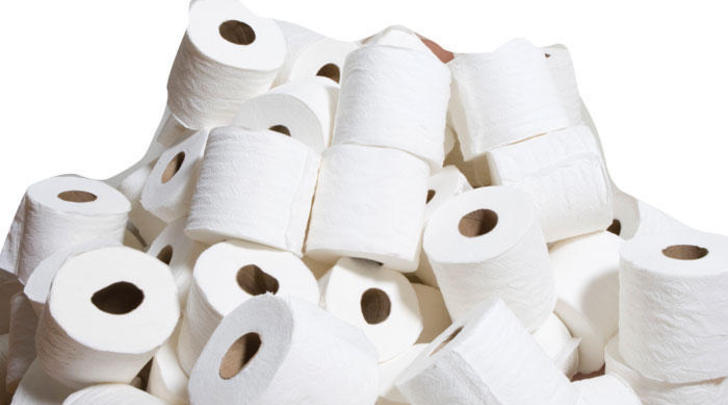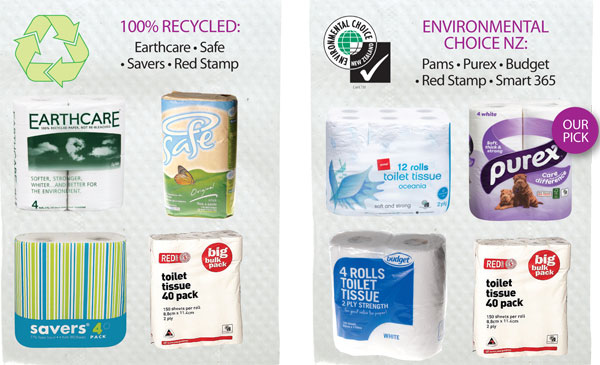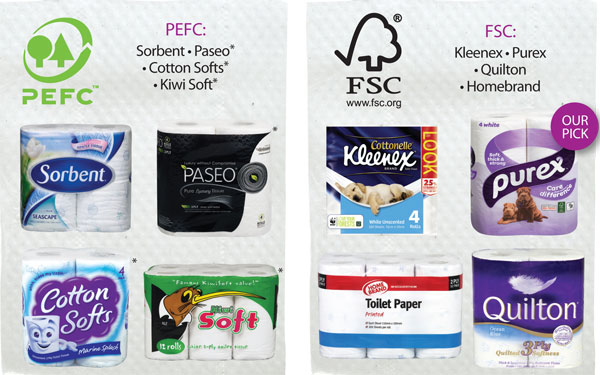Product guides
A buyer’s guide to toilet paper
Greg Roughan - Green Ideas editor

Loo paper, TP, toilet tissue or bog roll – whatever you call it, if you lead a typical Western lifestyle then you use it – and use it every day. Well, you’d hope…
Invented in medieval China and popularised in the 19th century in the West, toilet paper has become an unquestioned part of the way we live life. However, its popularity is having a serious impact on the world’s forests and the choices consumers make around toilet paper can make a big difference to forest sustainability.
Wiping out forests
Independent Washington-based research organisation the World Watch Institute claimed in 2010 that worldwide toilet paper accounts for 10% of total paper use and requires the felling of 27,000 trees every day to meet consumer demand.
Happily, trees have the potential to be the ultimate sustainable product. They create wood literally out of thin air by converting CO2 and water, plus trace minerals from the soil into timber. Harvesting and then replanting trees to make products such as toilet paper can be an environmentally sound, sustainable and economically positive business – but the devil is in the detail.
Cutting down virgin forests – those that have not been milled before – is terrible environmental behaviour for many reasons. Such ‘primary’ forests support a huge diversity of plants and animals – generally more than in ‘secondary’ forests that have been milled and then regrown. Rare animals such as the Sumatran tiger, orang-utans, and clouded leopards all depend on the rich diversity of old growth forests remaining intact.
Forests also function as the lungs of the planet by converting CO2 to oxygen; they provide a livelihood and home for indigenous peoples, prevent erosion and flooding and are a source of recreation and tourism revenue.
It’s crucial therefore that our remaining old forests are protected and that sustainably grown timber is used for paper products instead. Usually this means using timber from plantations – so long as the land for these wasn’t cleared from forests in the first place.
Labels to look for
The key to ensuring that the world’s forests – and the people and animals they support – aren’t flushed away – is choosing paper products that are 100% recycled or that display a credible forest certification scheme logo. These are your assurance as a consumer that the product came from a sustainable source.
Along with New Zealand’s reputable Environmental Choice NZ logo, the two labels to look out for are the Forest Stewardship Council (FSC) and the Programme for the Endorsement of Forest Certification (PEFC).
There are other eco labels out there, but FSC and PEFC are the most respected. Both are international not-for-profit organisations that promote sustainable forest management in similar ways. They work by ensuring everyone involved in the wood industry plays by strict rules covering everything from pesticide use and workers’ rights to preserving rainforests. Once it’s been proved that a forest industry ‘stakeholder’ meets all the criteria, they become certified – and a product that can prove it uses only certified suppliers can then display the relevant logo.
What’s the difference?
Whether a product is FSC or PEFC certified often just comes down to the system that’s most popular in the country where the processing takes place. However there are controversial differences between the two schemes.
FSC issues certification based on its own standards, an objective set of rules that cover broad environmental, social and workers’ rights issues. PEFC on the other hand covers similar concerns but operates by endorsing a country’s local schemes as the basis for giving its tick of approval.
The strength of the PEFC system is it gets tailored to local realities – when it works in South America it might emphasise indigenous rights, for example, while the forestry issues in Asia might be more about saving tigers.
The weakness of the PEFC system, though, claim critics such as Greenpeace, is it can vary if a country’s laws are lax. In 2011 Indonesia became a flashpoint for such allegations when Greenpeace said it had tested a range of paper products by the company Asia Pulp and Paper (APP) and found rainforest material in them.
APP pulp makes its way into three toilet tissue brands sold here by Cottonsoft Ltd – Paseo, Cottonsoft and Kiwisoft – and Greenpeace believes APP was able to exploit weak laws in Indonesia while retaining the PEFC status of these brands. Cottonsoft firmly denies these claims, while Greenpeace says the company could improve its commitment to sustainability.
Ultimately at Green Ideas we believe the FSC scheme gives the strongest assurance of forest protection. However the PEFC system takes a close second place and should remain a reliable guide for consumers making eco-friendly choices. If the stoush between APP and Greenpeace proved anything, it’s that even if it is possible to cut corners within a scheme, the potential for consumer backlash makes it foolish. Since the argument with Greenpeace, Cottonsoft Ltd has taken further steps and is now going through the rigorous Environmental Choice New Zealand approval process.
Environmentally-friendly toilet papers
A selection of brands accredited by reputable eco labels (or that are 100 per cent recyled).


*Despite claims that these products were created unsustainably we are listing them in our toilet paper buyer’s guide because they hold PEFC certification, which we believe remains a reputable forest protection scheme. However, as the facts of the claims remain unclear, we are withholding full endorsement until Cottonsoft Ltd completes the rigorous Environmental Choice New Zealand certification process, which it is currently undergoing.
Worth watching...
- Greencane Ecopaper claims to use up to 70 per cent sugar cane fibre, a byproduct of the sugar industry, thereby reducing the need for felling trees for toilet paper.
- Green Soft toilet paper claims to use no trees, instead sourcing fibre from bamboo, straw, reeds and cotton.
These products raise some interesting alternatives to using timber. Gaining the stamp of approval from a reputable environmental certifier would be the next step for these products in assuring consumers they are a credible eco choice.
